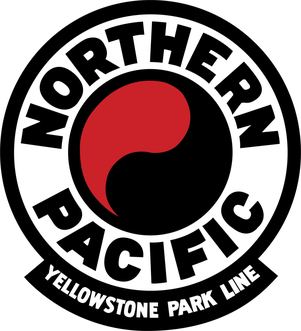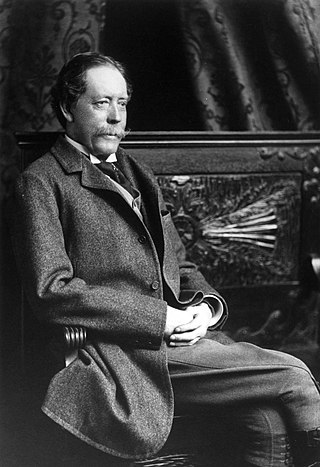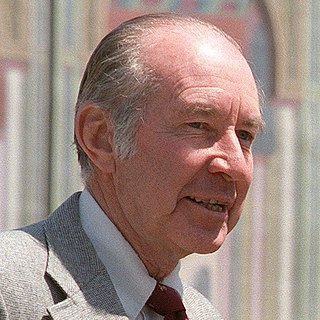Related Research Articles

America's first transcontinental railroad was a 1,911-mile (3,075 km) continuous railroad line built between 1863 and 1869 that connected the existing eastern U.S. rail network at Council Bluffs, Iowa, with the Pacific coast at the Oakland Long Wharf on San Francisco Bay. The rail line was built by three private companies over public lands provided by extensive U.S. land grants. Building was financed by both state and U.S. government subsidy bonds as well as by company-issued mortgage bonds. The Western Pacific Railroad Company built 132 miles (212 km) of track from the road's western terminus at Alameda/Oakland to Sacramento, California. The Central Pacific Railroad Company of California (CPRR) constructed 690 miles (1,110 km) east from Sacramento to Promontory Summit, Utah Territory. The Union Pacific Railroad (UPRR) built 1,085 miles (1,746 km) from the road's eastern terminus at the Missouri River settlements of Council Bluffs and Omaha, Nebraska, westward to Promontory Summit.

The Union Pacific Railroad is a Class I freight-hauling railroad that operates 8,300 locomotives over 32,200 miles (51,800 km) routes in 23 U.S. states west of Chicago and New Orleans. Union Pacific is the second largest railroad in the United States after BNSF, with which it shares a duopoly on transcontinental freight rail lines in the Western, Midwestern and West South Central United States.

CSX Transportation, known colloquially as simply CSX, is a Class I freight railroad company operating in the Eastern United States and the Canadian provinces of Ontario and Quebec. Operating about 21,000 route miles (34,000 km) of track, it is the leading subsidiary of CSX Corporation, a Fortune 500 company headquartered in Jacksonville, Florida.

John Frank Stevens was an American civil engineer who built the Great Northern Railway in the United States and was chief engineer on the Panama Canal between 1905 and 1907.

The Northern Pacific Railway was a transcontinental railroad that operated across the northern tier of the western United States, from Minnesota to the Pacific Northwest. It was approved by Congress in 1864 and given nearly 40 million acres of land grants, which it used to raise money in Europe for construction.

William Jackson Palmer was an American civil engineer and veteran of the American Civil War. During the Civil War, he was promoted to brevet brigadier general and received a Medal of Honor for his actions.

William Graham Claytor Jr. was an American attorney, United States Navy officer, and railroad, transportation and defense administrator for the United States government, working under the administrations of three US presidents.
The Kansas Pacific Railway (KP) was a historic railroad company that operated in the western United States in the late 19th century. It was a federally chartered railroad, backed with government land grants. At a time when the first transcontinental railroad was being constructed by the Central Pacific and the Union Pacific, it tried and failed to join the transcontinental ranks. It was originally the "Union Pacific, Eastern Division", although it was completely independent. The Pennsylvania Railroad, working with Missouri financiers, designed it as a feeder line to the transcontinental system. The owners lobbied heavily in Washington for money to build a railroad from Kansas City to Colorado, and then to California. It failed to get funding to go west of Colorado. It operated many of the first long-distance lines in the state of Kansas in the 1870s, extending the national railway network westward across that state and into Colorado. Its main line furnished a principal transportation route that opened up settlement of the central Great Plains, and its link from Kansas City to Denver provided the last link in the coast-to-coast railway network in 1870. The railroad was consolidated with the Union Pacific in 1880, and its mainline continues to be an integral part of the Union Pacific network today.
Railroader of the Year is an annual award presented to a North American railroad industry worker by trade journal Railway Age. The award was first presented in 1964 by trade journal Modern Railroads and has continued through the magazine acquisition in 1992 to the present.

Railway Age is an American trade magazine for the rail transport industry. It was founded in 1856 in Chicago and is published monthly by Simmons-Boardman Publishing Corporation.

The Kiamichi Railroad Company is a Class III short-line railroad headquartered in Hugo, Oklahoma.

The Pacific Harbor Line was formed in 1998 to take over the Harbor Belt Line (HBL). In 1998, the Alameda Corridor was nearing completion, allowing for a massive amount of railroad traffic from the largest harbors in the Western hemisphere: Port of Los Angeles and Port of Long Beach.
The E.H. Harriman Award was an annual award presented to American railroad companies in recognition for outstanding safety achievements.
Lowell S. "Jake" Jacobson (1940-2021) served 29 years with the Union Pacific Railroad, later President and Chief Operating Officer of the Copper Basin Railway of Hayden, Arizona.
Fred Thomas Perris was Chief Engineer of the Atchison, Topeka, and Santa Fe Railway, who oversaw the construction of the last leg of the 2nd Transcontinental Railroad from Barstow, California through Cajon Pass and down to San Bernardino and Los Angeles, a task that employed six thousand laborers and is still in use by BNSF Railway and Union Pacific Railroad He also laid track from Riverside, California to San Diego, California, laying out a series to town sites along the track, one of which, Perris, California was named in his honor. The city of Perris, California, a station on the California Southern Railroad, was named in his honor.(Its Cajon Pass. Not El Cajon Pass according to Chard Walkers "Cajon. Rail Passage To The Pacific")
Edward L. Moyers, Jr. was an American railroad executive of the 20th century. He served as president and CEO of several railroads including MidSouth Rail, Illinois Central Railroad and Southern Pacific Railroad. In 1995, Railway Age magazine named Moyers its "Railroader of the Year".
Bill Wimmer is an American railroad executive who worked in operations for the Union Pacific Railroad.
References
- ↑ "Railway Age's Railroader of the Year - Bill Wimmer: Building Union Pacific". Railway Age Magazine. 2007. Retrieved 2007-01-12.